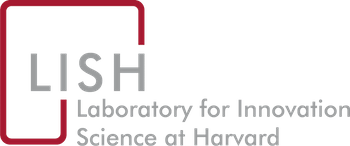Marketing
Zero Robotics Video Challenge
. 2014. Havas: Change Faster. Harvard Business School Multimedia/Video Case. Harvard Business School. Publisher's VersionAbstract
. 2014. Havas: Change Faster. Harvard Business School Teaching Plan. Harvard Business School. Publisher's VersionAbstract
. 2015. Havas: Change Faster. Harvard Business School Teaching Notes. Harvard Business School. Publisher's VersionAbstract
. 2017. Weathernews. Harvard Business School Case. Harvard Business School. Publisher's VersionAbstract
. 2014. Victors & Spoils: 'Born Open'. Harvard Business School Multimedia/Video Case. Harvard Business School. Publisher's VersionAbstract
. 2014. Victors & Spoils: 'Born Open'. Harvard Business School Teaching Plan. Harvard Business School. Publisher's VersionAbstract
. 2013. “Using Open Innovation to Identify the Best Ideas.” MIT Sloan Management Review 55 (1). Publisher's VersionAbstract
